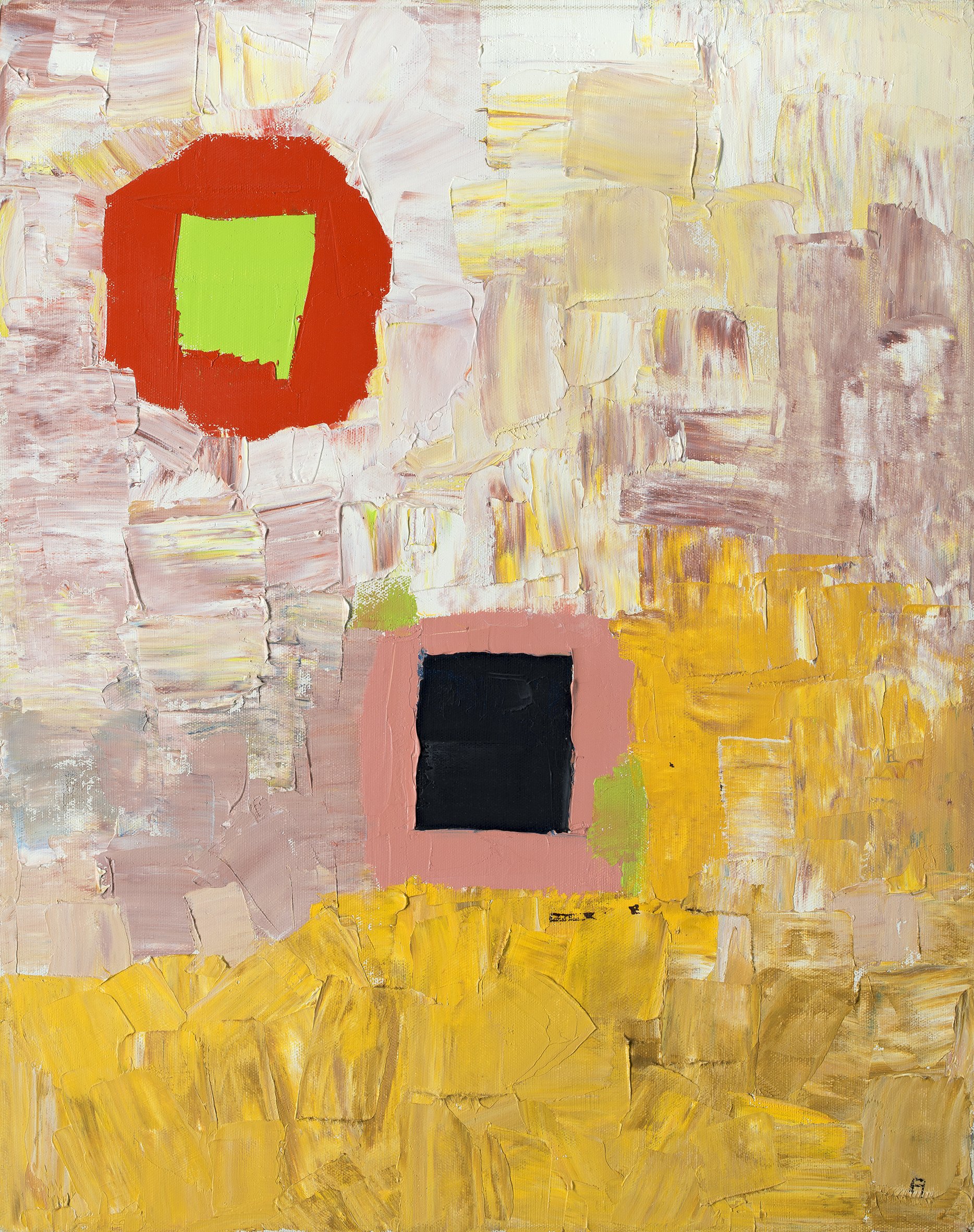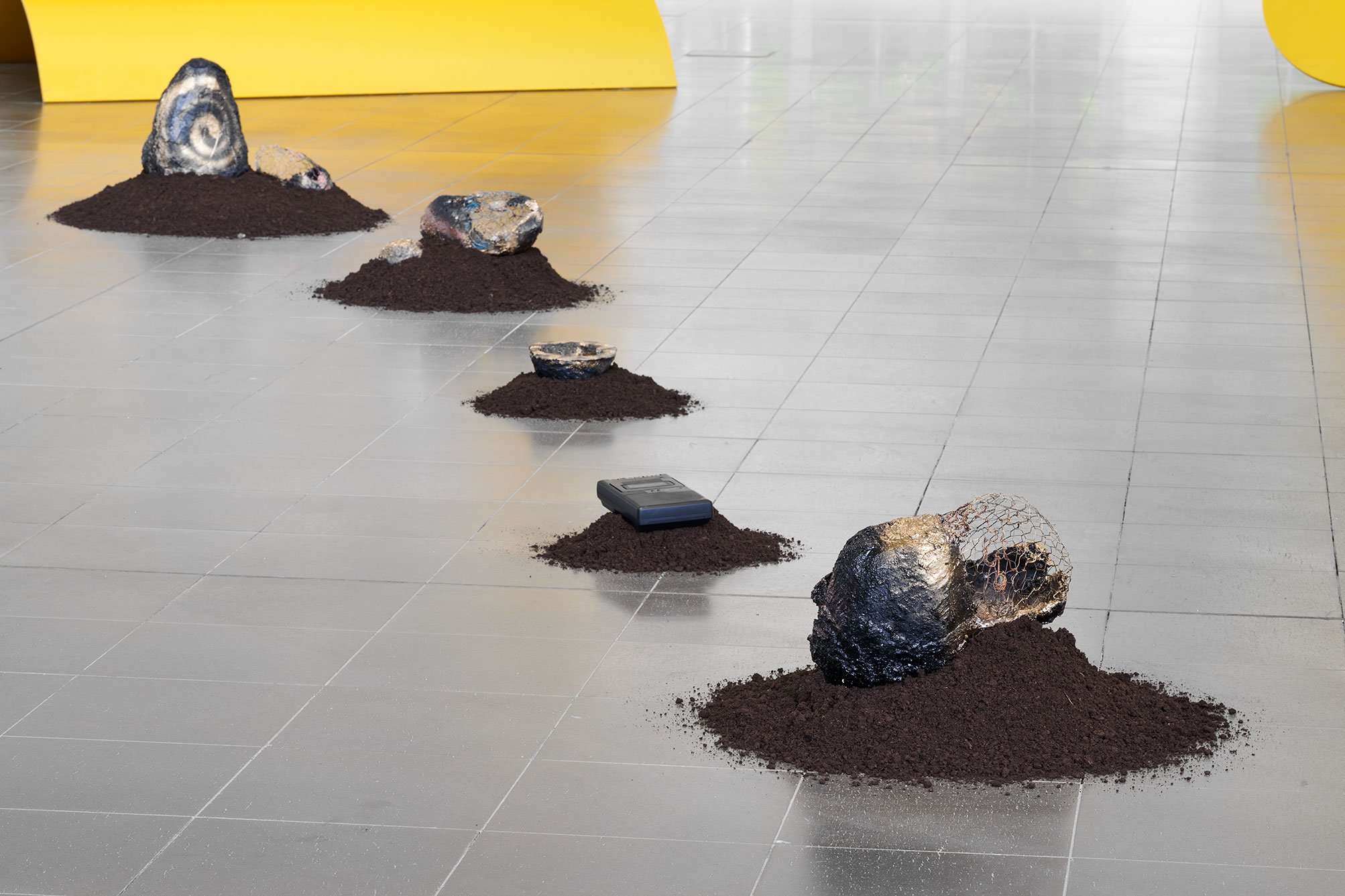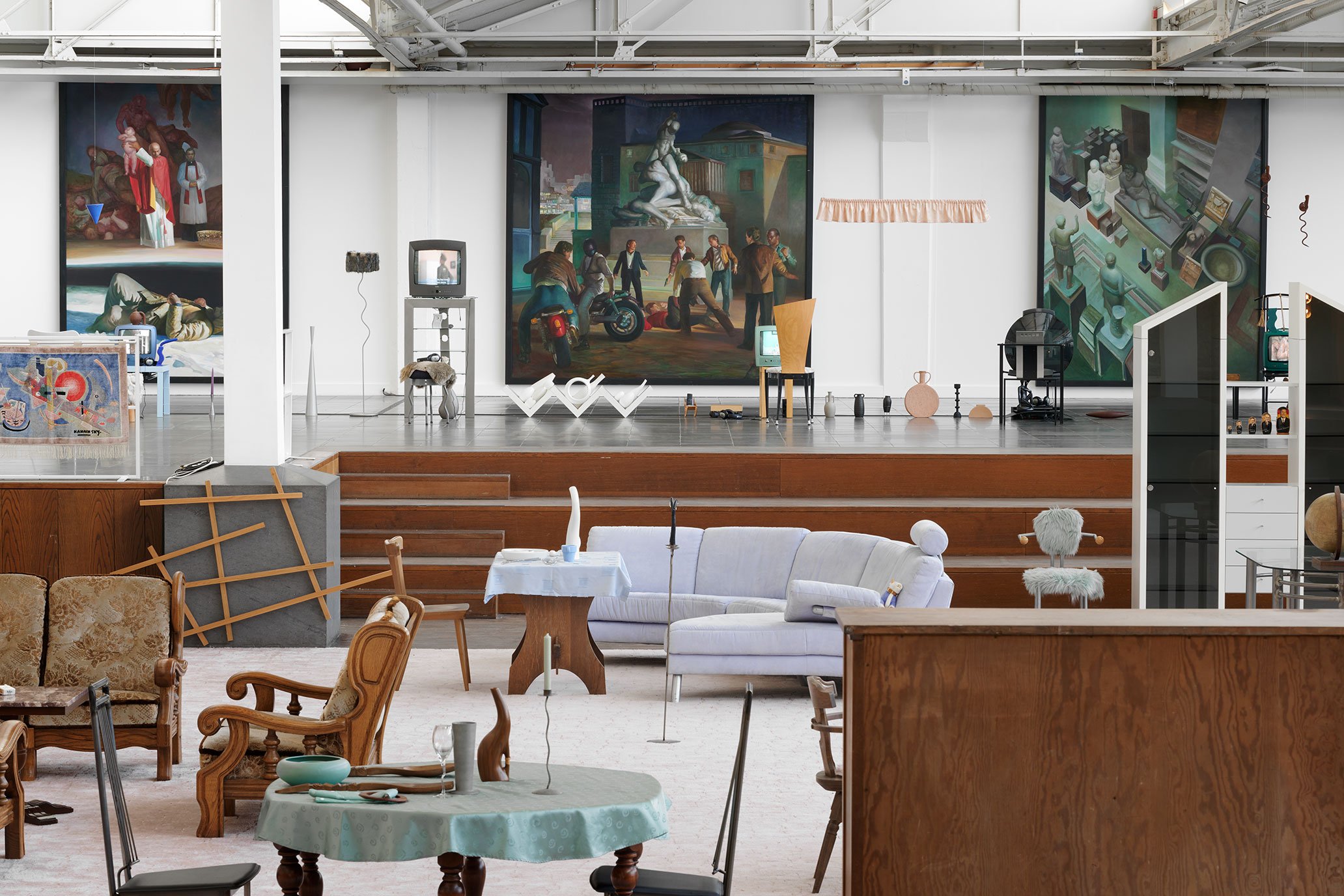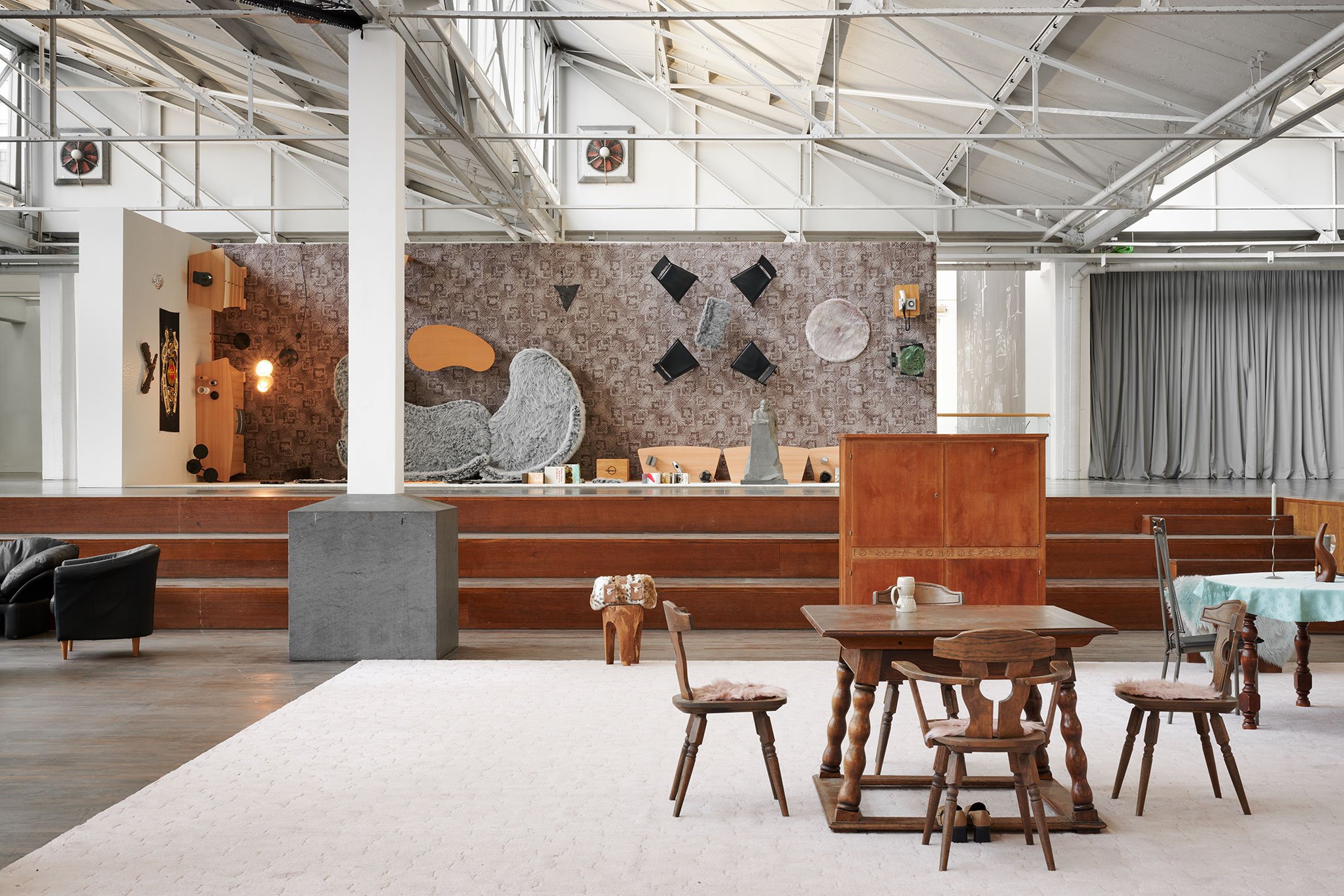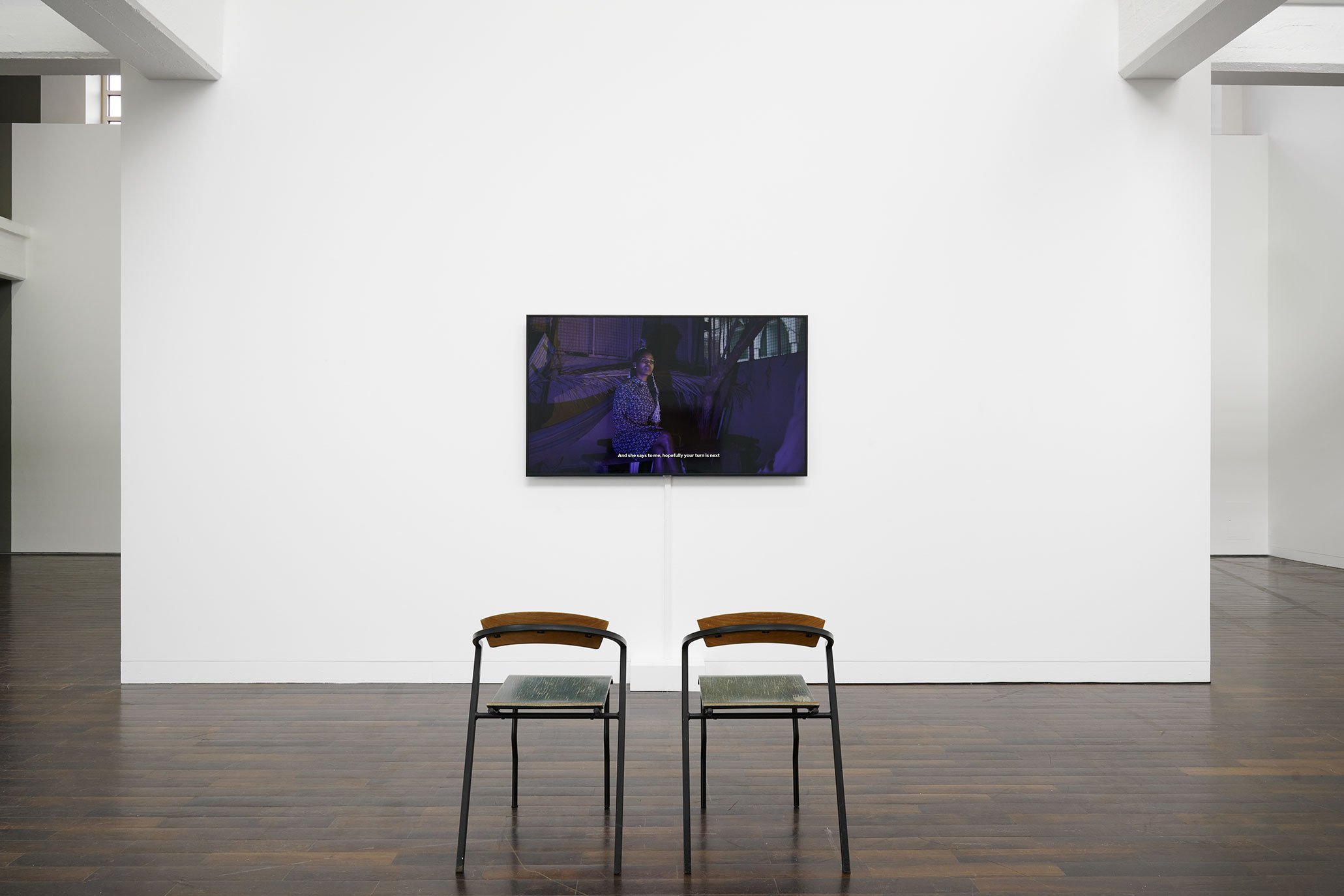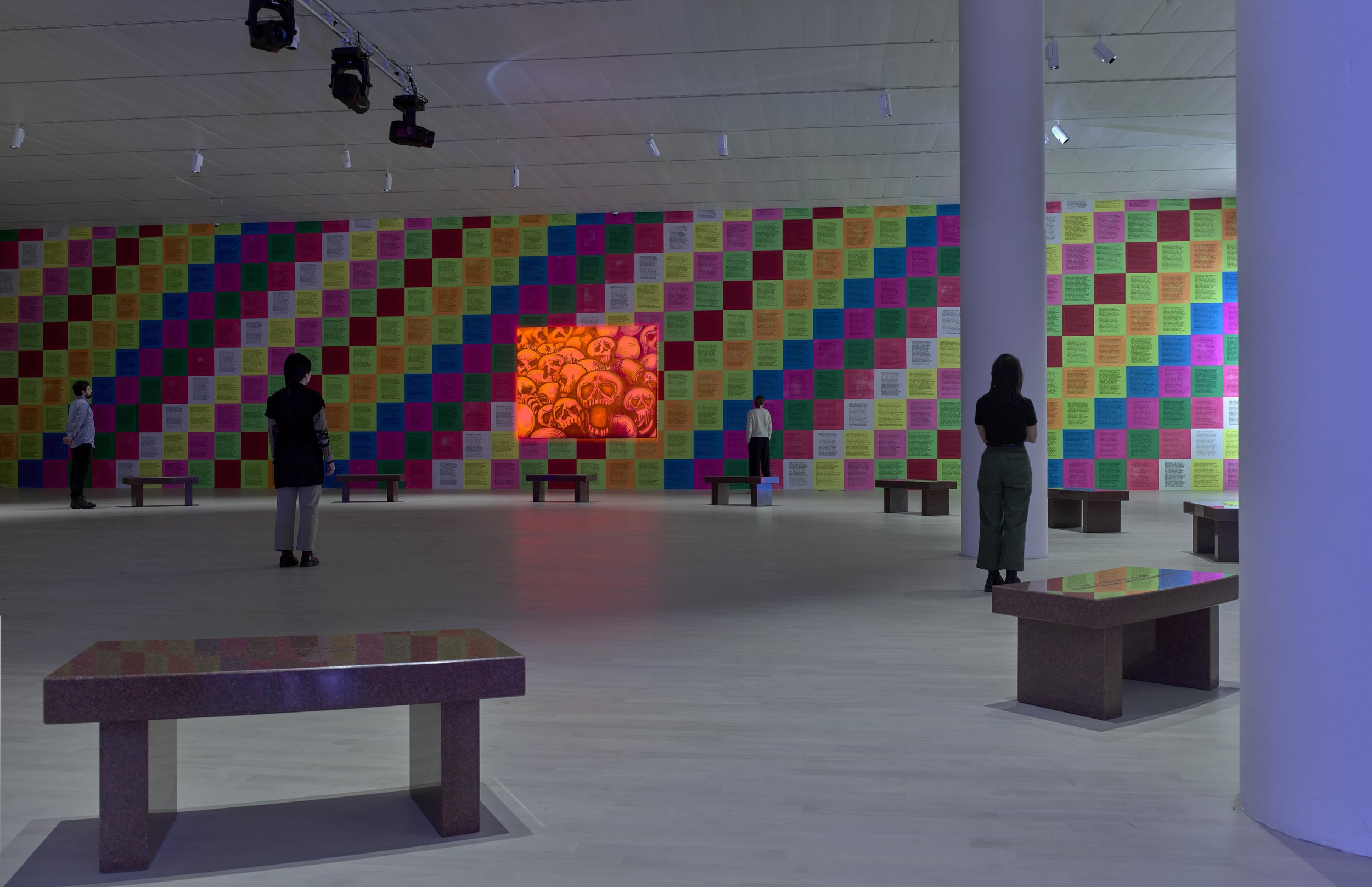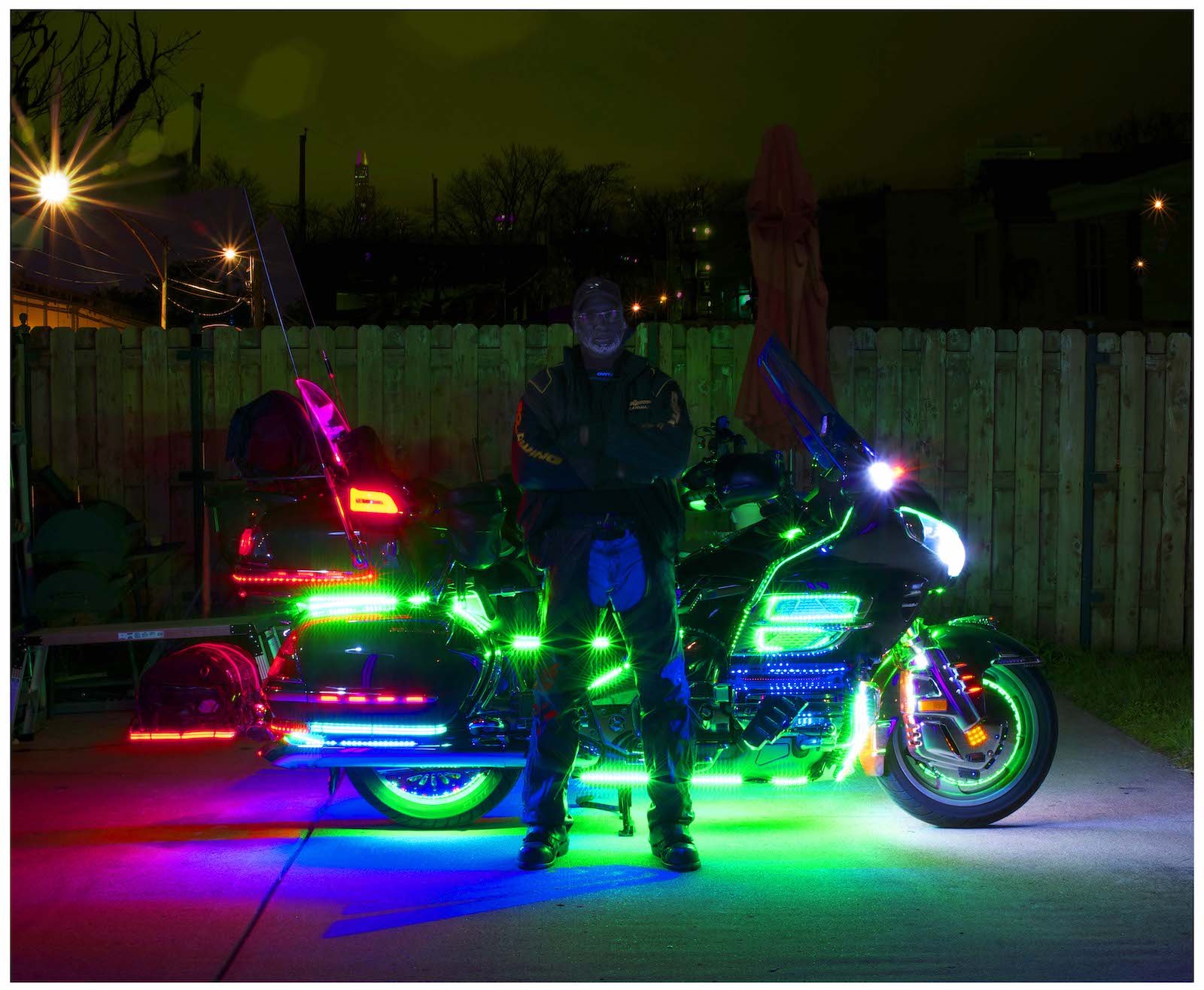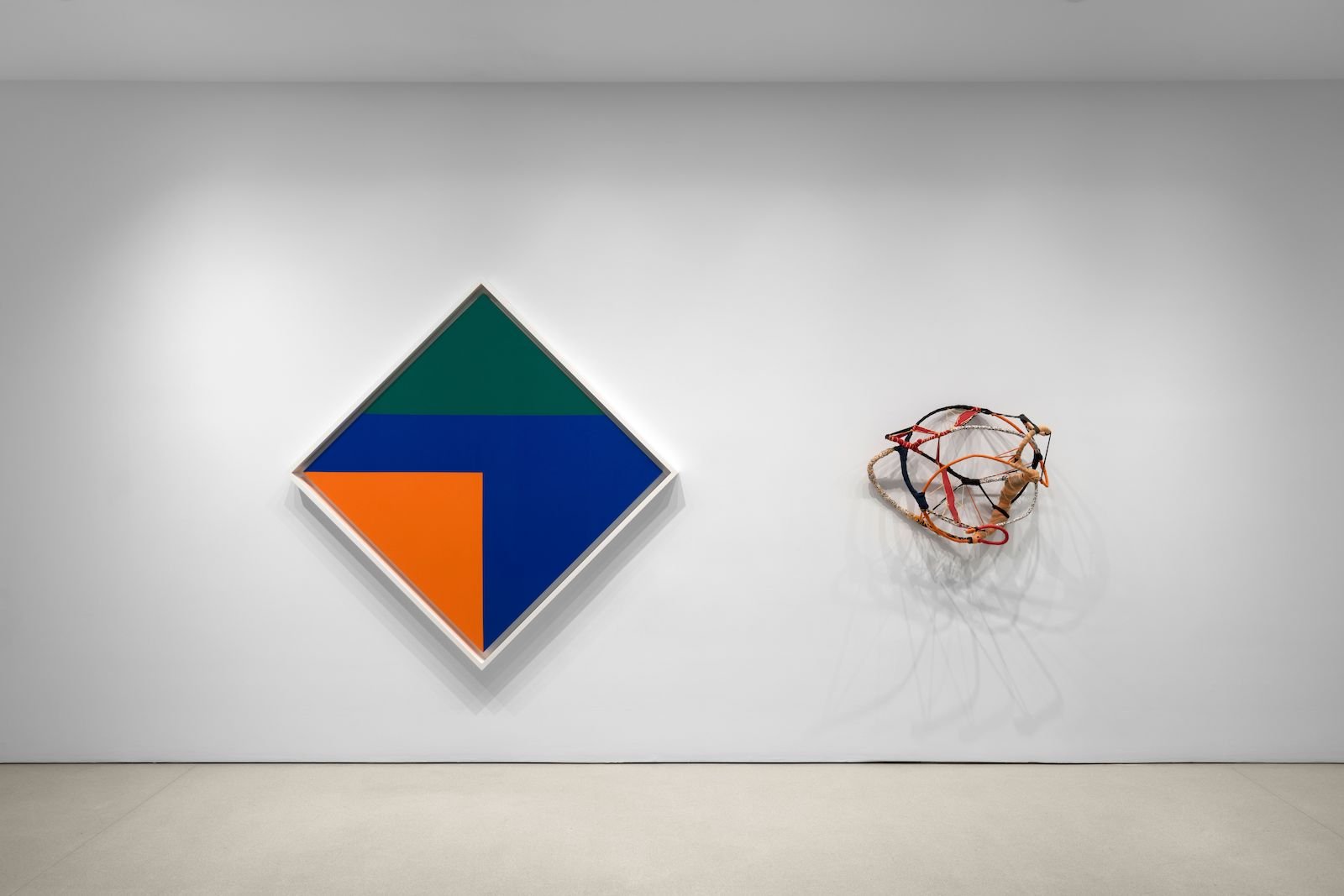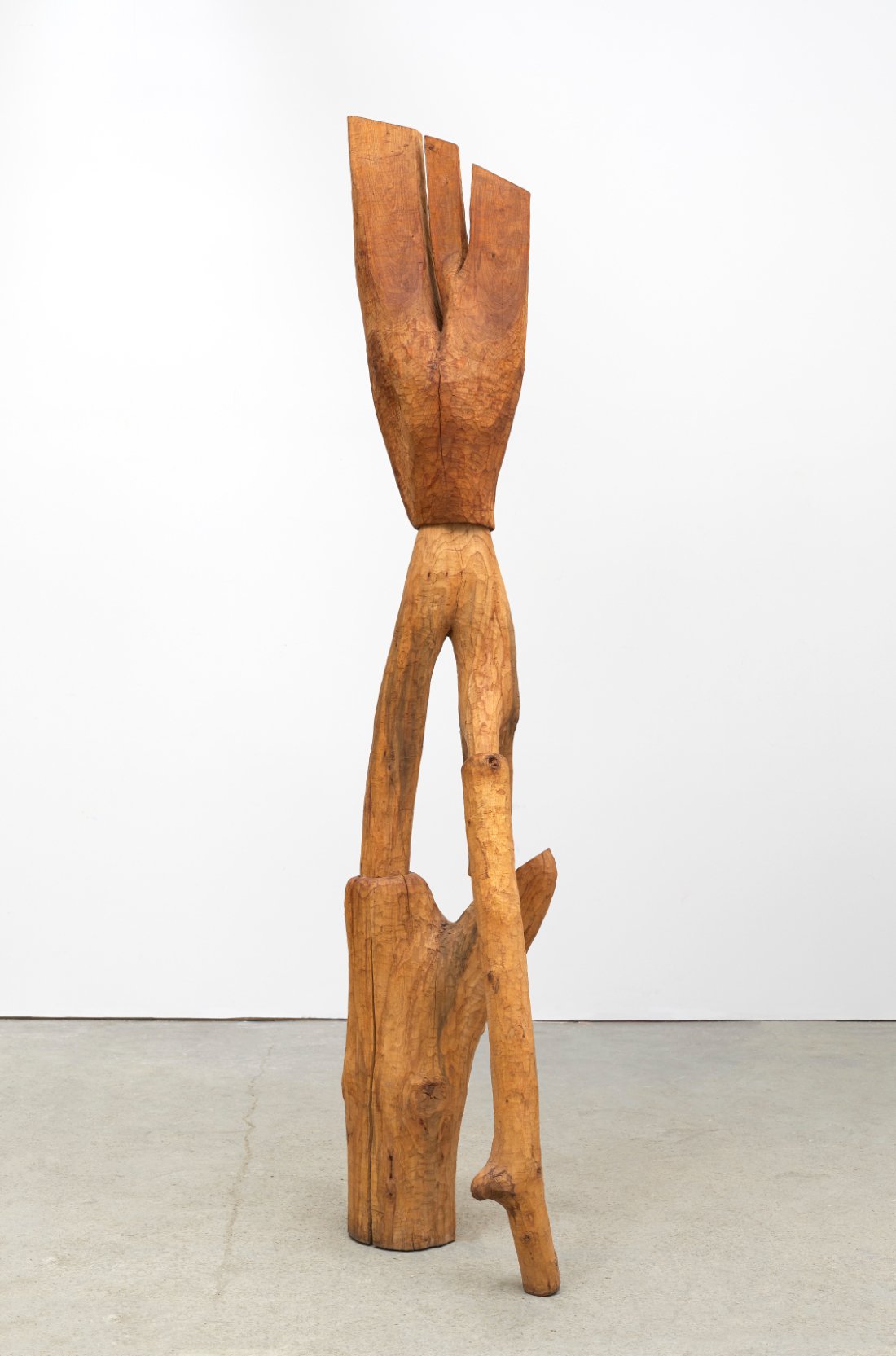Illiberal Lives, installation view, Ludwig Forum Aachen, 2023. Photo: Mareike Tocha
text by Lara Schoorl
Once known for its booming post-war mining industry, Germany’s Nordrein Westfahlen region has since developed into a thriving art hub (the last coal mine closed in 2018). With Art Cologne forming out of Kunstmarkt Köln in 1967, a host of academies and contemporary art institutions generating dialogue, and the city cluster (including Düsseldorf, Essen, Cologne, and Wuppertal) taking a central position in West Europe’s post war art world, the Ruhr Region is a hidden cultural oasis. While arguably operating in the shadows of larger art attractions, such as documenta, Manifesta, the Venice Biennale, Art Basel and its satellite fairs nearby, as well as the Berlin art scene, these four exhibitions in the river’s valley were a breath of fresh air during the market driven Basel week and the following summer lull in the commercial art world.
Etel Adnan: Poetry of Colors at K20 (Kunstsammlung NRW), Düsseldorf
Etel Adnan in her studio in Paris, 2014. © Galerie Lelong & Co.
Hot, 1960 Oil on canvas, 51 x 40,5 cm Kunstsammlung Nordrhein-Westfalen, Düsseldorf © VG Bild-Kunst, Bonn 2022 Photo: Galerie Lelong & Co., Paris
It is hard to put into words how much sense the work of Etel Adnan makes, her art and her poetry, and how they are connected. How the lines of letters in her handwriting become the onset of shapes we see in her paintings. How she wrote in multiple languages, alternating between them, in proximity to one another; Adnan shows their perceived differences while keeping them as part of one connected form of expression. As such, the work in its various forms epitomizes the essence of a human life and its multitude of contexts. The unique narrative of an individual and the relationships connected to her, the places she knew both real and imagined, the politics she stood by, and the materials her hands beguiled. And then, there is just the pure beauty of color, often circling out of the squares centered in her paintings that reference the sun: light, the original facilitator of color. Like her work, this exhibition was a lasting gift; it followed a retrospective at the Van Gogh Museum in Amsterdam last summer and hopefully will continue to find future iterations around the world.
Illiberal Lives at Museum Ludwig Forum, Aachen
Illiberal Lives, installation view, Ludwig Forum Aachen, 2023. Photo: Mareike Tocha
Illiberal Lives, a continuation of the 2021 Illiberal Arts at Haus der Kulturen der Welt in Berlin, extends the conversation about present day liberalism in society and questions the freedom of liberal promises of progress, revealing its “unfreedom” instead. It is an exhibition that keeps unfolding, visually and conceptually, post visit, triggering as much thinking as viewing. Upon entering the museum, one enters five large installations by Henrike Naumann and is completely immersed by nationalistic German design. While it initially seemed off-balance to have five installations of such scale by one artist in a group show, this dense core, which also includes works from the museum collection selected by the artist, forms a conceptual map for the exhibition overall. While it is dense, central and arguably local, Naumann’s presentation is so far and wide, it carries the weight and narratives of all other works, reverberating well beyond the museum walls into ancient and current histories. Melika Ngombe Kolongo’s work Nzita Dia Nza (2022), literally spirals out from the edge of Naumann’s installations in the central hall and into another gallery. Small mounds of earth holding metallic sculptures, a cassette recorder, and small plants form a divine route rooted in ancient Congolese geomantic practices that lead us to a video installation, Invisible Gestures (2022), and dovetail Kolongo’s practice as a DJ with her visual art through sound, drawing, the body, and nature. An interdisciplinary practice continues in this same gallery with Bassem Saad’s videos and prints. Concise and beautifully written textual fragments overlay visual landscapes of Beirut in the films and perhaps of Berlin, Marseille, and Eastern Mediterranean places in the prints. The series of prints Suppose that Rome is not a human habitation (2022-23) are poems from anonymous locales, or at least a word from elsewhere that holds the power to influence the future of its destination or recipient by expanding their view. Saad’s video works, Kink Retrograde (2022) and Congress of Idling Persons (2021) rooted in specific events, do not only inform us of what happened––the October 2019 Lebanese uprising, the aftermath of the 2020 explosion in Beirut, the murder of George Floyd––their imagery form the context of the lives of the speakers in the film, how it formed and influenced their personal existence within community and the potential of alternative futures. The exhibition goes into a hundred directions through art from the 20th and 21st centuries referencing multiple wars, murders, and trials. It creates and untangles myths, it is through those myths that love, beauty and hope, an array of ingredients for the future persist, and is precisely as well where freedom can be found or can be narrated into existence, some day.
Jenny Holzer at K21 (Kunstsammlung NRW), Düsseldorf
Exhibition view: JENNY HOLZER, Kunstsammlung Nordrhein-Westfalen, Düsseldorf, Germany, 2023 © 2023 Jenny Holzer, member Artists Rights Society (ARS), NY Photo: Achim Kukulies
Spread across multiple galleries, Jenny Holzer brings information we (may) have heard before right in front of us (again); on a large scale, in speaking colors and materials. In isolated and personal bouts we are confronted with a variety of history’s atrocities. Upstairs we see formerly classified documents from US government institutions––now available, although redacted, through the Freedom of Information Act––about prison camp tortures, crime against civilians, and military operations in Iraq. The size of the works fits the weight of the knowledge they carry. Blown up, Holzer’s Redaction Series (2005-) of paintings and silkscreens not only puts a looking glass on isolated events, but in doing so, they shine light on the information that is kept in the dark. The application of metal leafing onto the silk screens and oil paintings echo an aesthetic of weapons, ballistics, and dog tags; but the munition these works carry is a call to the freedom of knowledge. Downstairs, all walls of the gallery are covered with Holzer’s Inflammatory Essay (1979-82), posters that immerse the viewer in hundreds of the hundred-word manifestos on politics, gender, violence, and, of course, abuse of power. Despite an overwhelming entry of color and messaging, the space conveys a solemn feeling, accumulating with every text that one reads, but instilled instantly and visually through seventeen of the red granite Survival benches, reminiscent of tombstones and placed in a circle holding engraved phrases that float between promise and discomfort. The curatorial decision to place two floors between Jenny Holzer’s earlier work downstairs and more recent work upstairs provides an inevitable but necessary pause in viewing and processing the weight of almost every word in every work.
Protect Protect metal, 2023 24 gold, moon gold, platinum, palladium and red gold leaf and oil on linen 79 x 102.25 in. / 200.7 x 259.7 cm Text: US government document © 2023 Jenny Holzer, member Artists Rights Society (ARS), NY Photo: Sveva Costa Sanseverino
Ruhr Ding: Schlaf, at Urbane Künste Ruhr
Ruhr Ding Schlaf Nora Turato who wants to tell her 2023 c Henning Rogge
The final iteration of the public art exhibition trilogy Ruhr Ding, fittingly, titled Schlaf closed this summer following Ruhr Ding: Territorien (2019) and Ruhr Ding: Klima (2021). The exhibitions, organized out of Urbane Künste Ruhr are the brainchild of Britta Peters, who has brought together artists from all over the world as well as local artists to speak to universally experienced themes in the geographical context of the small but economically, financially, and culturally influential Ruhr Region. The theme of Schlaf (or in English sleep) represents a criticism of the capitalist clock. Through the contradictory and modern idea of the eight-hour night and eight-hour work day, resting itself has become a commodity and is applied in order to maintain productivity. The works in Schlaf are scattered throughout the Southern and more quiet area of the Ruhr Region, in the cities of Essen, Mülheim an der Ruhr, Witten, and Gelsenkirchen-Erle––these were feared to become ghost towns after the closing of the mines. While the previous iterations of Ruhr Ding were connected to the soil and the air, Schlaf brings us to the body. Of course, the body is inherently connected and dependent on both soil and air, and so, dialogues with the locale and its political and environmental crises continue in Schlaf as well—to such a degree that connections to sleep are at times far-fetched. Often, instead of sleep, however, we encounter a response to its absence, the night, or in a broader understanding, acts of (self-)care. And, often the angles were utopic, providing a “dream” for an alternative future. Sleep thus came into the conversation via its various interpretations and associations that arose in the particular public spaces where the works found a temporary home. Nora Turato created an ASMR-like audio installation in Witten’s Schwesternpark, a former hospital garden, that encouraged listeners to not “just do something, [but] stand there,” for example. While the reversal of meaning of this well-known phrase initially makes one smirk, upon hearing it several times it begins to lose its meaning altogether. Only the monotone but inviting voice of the artist remains, the sound becoming a mantra. Elsewhere in Witten, in a cultural center, Melanie Manchot showed a new film, Liquid Skin; the viewer closely follows multiple people, one at a time, at night, always with their back towards the camera, as they walk through distinct yet unrecognizable buildings. It is as if they are sleepwalking and we are in a state of submission, following them in a near trance, glued to the screen and in anticipation of the end of this dream or nightmare. But, there are instances in which sleep is very literally present, such as in the must-see idiosyncratic Museum für Fotokopie in Mulheim. For Schlaf, the museum opened the exhibition We’re Closing. Taken from the advertising slogan often used by competing mattress stores to drive up sales, the show presented bed linens, pillows, and pajamas onto which various artists had copied their art, including copy artist Klaus Urbons and David Hockney.
Ruhr Ding Schlaf Melanie Manchot 2023 Liquid Skin c Henning Rogge
Ruhr Ding Schlaf Melanie Manchot 2023 Liquid Skin c Henning Rogge



